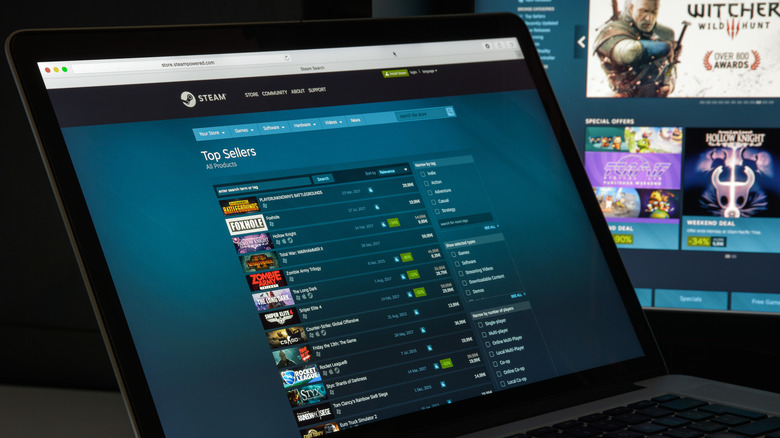Why You Need To Save Your Steam Receipts
Online storefronts have made shopping easier than ever, allowing buyers to make purchases on the go or while lounging at home. This convenience has also come with a host of security dangers, a reality that affects every industry – including gaming. Valve, the company behind video game distribution platform Steam, has had to contend with a number of such threats over the years.
Hackers have used the service to spread viruses and hijack players' PCs through exploits. Scammers have also gotten in on the action. Some target unknowing Steam users via phone in the guise of professionals seeking to settle tax or debt balances. They then trick or intimidate their target into buying Steam Wallet Gift Cards from physical retailers and providing them with the corresponding codes.
Other scammers reach out to Steam users through chat with claims that their "account has been falsely or accidentally reported." From there, they urge the user to communicate with an individual posing as a Steam representative who asks for account or authentication information to "recover" access to the account. Once a scammer takes over an account, they might attempt to force payments out of the user or utilize it to scam their friend list and infiltrate more accounts.
While Valve has put measures in place to stop hackers and scammers, anyone can fall victim to these attacks or lose access to their account. To better prepare for and resolve this type of situation, Steam users can take a simple step: save their purchase receipts.
Steam receipts can help with account recovery and other issues
Steam users might be able to use the self-recovery process to regain control of their accounts, but this isn't always possible. In these cases, they must reach out to Steam Support and provide evidence that their account belongs to them. Steam doesn't list purchase receipts as a way to establish account ownership, but users will need to send in "payment information previously used on the account or ... retail product codes that have been activated through Steam." Users can determine their previous payment methods by referencing receipts for past purchases.
Beyond establishing account ownership, saving Steam receipts may come in handy in other scenarios. Users may need to prove that a purchase occurred when dealing with payment processors, banks, or credit card companies. Since Steam deals in digital downloads, a receipt also serves as evidence that a person owns a game should it disappear from their library.
Steam users can access a list of their past purchases by going to "Account details" > "View purchase history." From there, they can print or download a copy of the receipt for their records by clicking on a transaction and selecting "I would like to view or print the receipt for this purchase." The platform also emails a receipt to the address associated with the account right after a transaction.
Saving Steam receipts doesn't require a complex process or system. Users can create a "Steam" label for storing email receipts that hit their inbox. Alternatively, they may choose to download or screenshot receipts and keep them in a dedicated folder on their computer.


